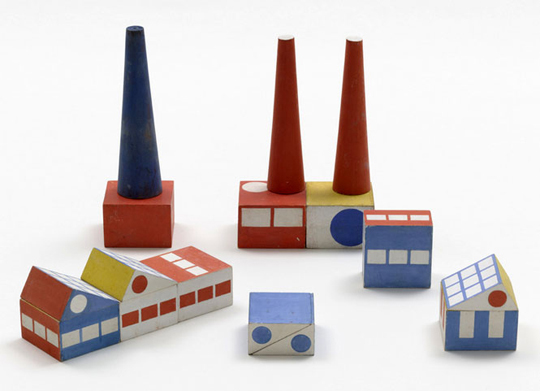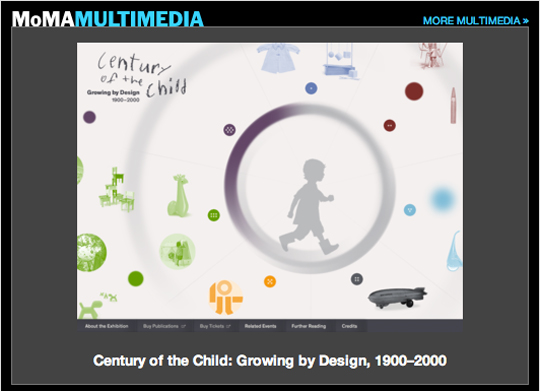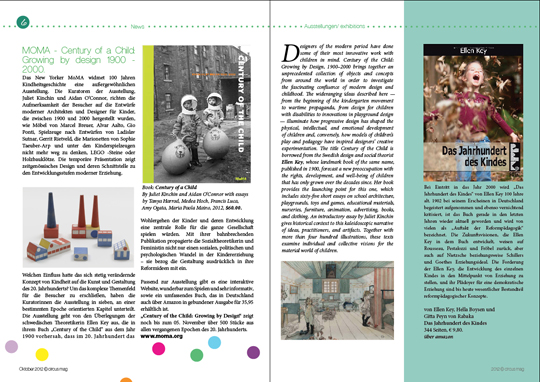Das Museum of Modern Art in New York zeigt in einer aktuellen Ausstellung Century of the Child: Growing by Design, 1900–2000 Design des 20. Jahrhunderts für Kinder.
 |
|
Ladislav Sutnar. Prototype for Build the Town Building Blocks
|
Welchen Einfluss hatte das sich stetig verändernde Konzept von Kindheit auf die Kunst und Gestaltung des 20. Jahrhunderts? Um das komplexe Themenfeld für die Besucher zu erschließen, haben die Kuratorinnen die Ausstellung in sieben, an einer bestimmten Epoche orientierten Kapitel unterteilt. Die Ausstellung geht von den Überlegungen der schwedischen Theoretikerin Ellen Key aus, die in ihrem Buch „Century of the Child“ aus dem Jahr 1900 vorhersah, dass im 20. Jahrhundert das Wohlergehen der Kinder und deren Entwicklung eine zentrale Rolle für die ganze Gesellschaft spielen würden. Mit ihrer bahnbrechenden Publikation propagierte die Sozialtheoretikerin und Feministin nicht nur einen sozialen, politischen und psychologischen Wandel in der Kindererziehung – sie bezog die Gestaltung ausdrücklich in ihre Reformideen mit ein.
 |
| www.moma.org |
Passend zur Ausstellung gibt es eine interaktive Website, wunderbar zum Spielen und sehr informativ, sowie ein umfassendes Buch, das in Deutschland auch über Amazon in gebundener Ausgabe für 35,95 erhältlich ist.
www.moma.org
Designers of the modern period have done some of their most innovative work with children in mind.The resent exhibition at MoMA in New York Century of the Child: Growing by Design, 1900–2000 brings together an unprecedented collection of objects and concepts from around the world in order to investigate the fascinating confluence of modern design and childhood. The wideranging ideas described here — from the beginning of the kindergarten movement to wartime propaganda, from design for children with disabilities to innovations in playground design — illuminate how progressive design has shaped the physical, intellectual, and emotional development of children and, conversely, how models of children’s play and pedagogy have inspired designers’ creative experimentation. The title Century of the Child is borrowed from the Swedish design and social theorist Ellen Key, whose landmark book of the same name, published in 1900, forecast a new preoccupation with the rights, development, and well-being of children that has only grown over the decades since. Her book „Century of the Child“ provides the launching point for this one, which includes sixty-five short essays on school architecture, playgrounds, toys and games, educational materials, nurseries, furniture, animation, advertising, books, and clothing. An introductory essay by Juliet Kinchin gives historical context to this kaleidoscopic narrative of ideas, practitioners, and artifacts. Together with more than four hundred illustrations, these texts examine individual and collective visions for the material world of children.







